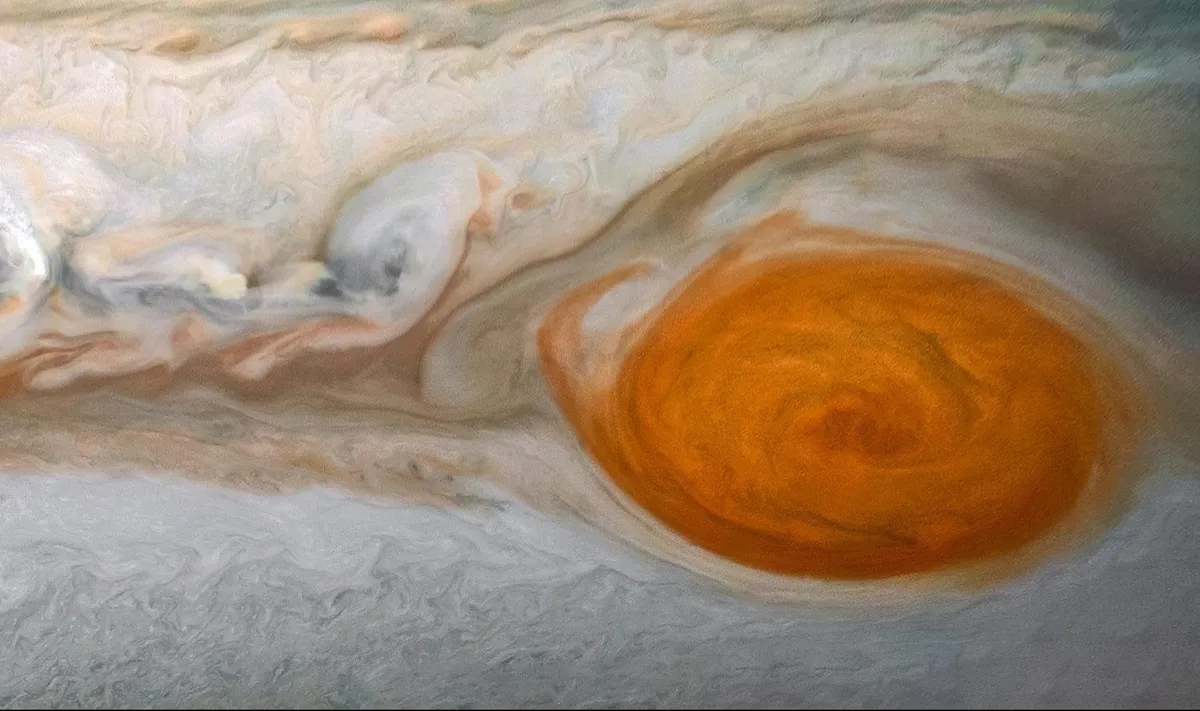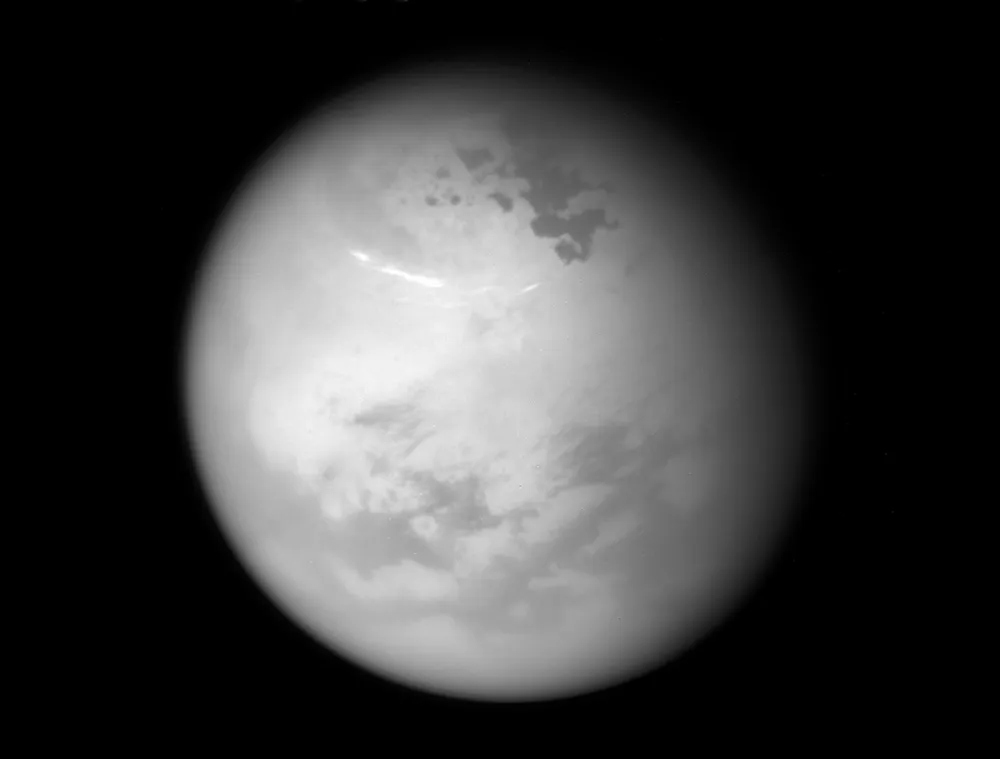All planets with substantial atmospheres exhibit weather and have storm systems.
But the characteristics of a storm will differ between these planets as a consequence of their different atmospheric pressures, temperatures, rotation rates and composition.
The outer planets, particularly Jupiter and Saturn, have some spectacular storm systems.

For example, in the jovian atmosphere the Great Red Spot (GRS) and white oval storms (WOS) are giant hurricanes.
These are like features seen on Earth, except they are much bigger and last for years or decades – even centuries in the case of the GRS.
This is because they develop in a rapidly rotating fluid atmosphere, without being slowed down by rubbing against the surface like on Earth.
Lightning has also been detected in Jupiter’s atmosphere.

Saturn shows many similar features and there have even been dust storms recorded on Saturn’s moon Titan.
Uranus and Neptune also exhibit some giant cloud storm systems.
Clouds are found on Mars, particularly at the equatorial regions, but the Red Planet is more noted for its dust storms.

These constantly move surface material around the planet. Sometimes these storms can engulf the entire planet and hide the surface from view.
The planetary atmospheres are certainly excellent natural laboratories for studying storms.
